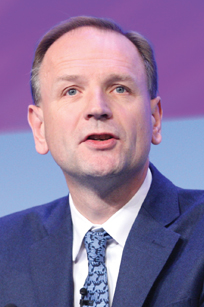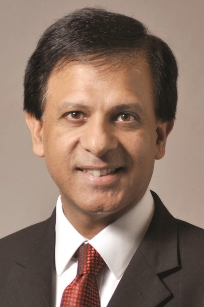Covid-19 update: 29 January
The grim deaths milestone was reached on Tuesday, with a daily deaths figure (by date of report) of more than 1,600 taking the UK over the 100,000 mark. Prime minister Boris Johnson said he took ‘full responsibility’ for the government’s actions. ‘We truly did everything we could,’ he said. ‘I am truly sorry for every life lost.’
The UK became the first country in Europe to pass the 100,000 figure, ahead of Italy (86,422) and France (73,713). Looking at deaths per million population, the UK still looks as though it has been hit very hard by the virus. While there are some countries/territories with tiny populations (Gibraltar and San Marino for example) that have high death rates relative to their population size, the UK remains above the major European countries, except for Belgium, which has seen 1,801 deaths per million compared to the UK’s 1,475.
Italy is not far behind the UK in terms of death rate – at 1,429 per million – while Germany continues to look as though it has been less severely hit. Its nearly 54,000 deaths to date represent 644 per million, according to the World Health Organization’s Covid-19 dashboard.
Last week, Ed Davey, leader of the Liberal Democrats, called for an inquiry into the government’s handling of Covid-19 to get underway this year. With such a high death total and the NHS ‘on its knees’, he said the country needed to learn the ‘lessons from what has gone so devastatingly wrong’. Prime minister Boris Johnson repeated promises that there would be an inquiry, but not until after the pandemic has passed.
‘There will come a time obviously for the learning of lessons – and there will be a full inquiry into everything – a moment to reflect and to understand and to prepare,’ he said. ‘But I don’t believe that time is right now, when the infection is very high and the NHS is battling heroically against this disease and the whole of British officialdom is fighting to control and defeat coronavirus.’
Labour leader Keir Starmer acknowledged that any government would have struggled with this pandemic, but said that the way the country had been affected was ‘not just bad luck’. ‘We were too slow into lockdown last March, too slow to get protective equipment to the front line and, of course, too slow to protect our care homes.’ He added that the government had failed to learn lessons from the first wave and then failed to deliver an effective test and trace system or clear public messaging. And it was then slow to follow scientific advice on further lockdowns.
Public health view
Others were also keen to point at decisions taken before the pandemic as contributing to the outcome. Linda Bauld, public health expert from the University of Edinburgh, rejected suggestions that lack of compliance with rules and restrictions was behind the high death rate. Instead, she said it was a system failure, blaming an ‘underlying legacy of mistakes made in the past’ – including disinvestment in public health and the level of underlying conditions in the population.
 Speaking to the BBC Radio 4’s Today programme on Wednesday, she also criticised a lack of focus on test and trace and delays in addressing international travel. And Michael Marmot (pictured), whose Build back fairer report in December explored how the pandemic had had an unequal impact on different parts of the community, underlined that the UK had entered the pandemic ‘in a bad state’ with rising inequality and a slowdown in life expectancy improvements.
Speaking to the BBC Radio 4’s Today programme on Wednesday, she also criticised a lack of focus on test and trace and delays in addressing international travel. And Michael Marmot (pictured), whose Build back fairer report in December explored how the pandemic had had an unequal impact on different parts of the community, underlined that the UK had entered the pandemic ‘in a bad state’ with rising inequality and a slowdown in life expectancy improvements.
NHS England chief executive Simon Stevens highlighted the continuing pressures on the NHS when he appeared before the Commons Health and Social Care Committee and the Science and Technology Committee on Tuesday. The NHS was in ‘a very serious position’, he said. While new admissions did appear to be down slightly, the number of Covid positive inpatients was plateaued at around 33,000 across England – reductions in London were being offset by increases in the Midlands. Three quarters of the patients in intensive care beds were there for Covid-related reasons.
Pressures on the NHS were further underlined by the release of the weekly winter sitrep figures. They reveal that the English NHS now has nearly 6,300 adult critical care beds open, compared with around 4,400 at the end of November. However, some 5,446 of these beds were occupied on 24 January and a number of individual trusts had all their critical care beds full.
NHS Providers chief executive Chris Hopson said the current pressure was likely to last for at least a further month. ‘It is extremely impressive to see how trusts are continuing to expand the capacity of intensive care units, with more critical care beds made available this week. This reflects how staff are continuing to flex their capacity to treat the sickest patients requiring ventilation, with these beds occupied at record levels – 87% nationally.’
He also highlighted that more people were taken to hospital by ambulance this week, with handover delays meaning crews could not respond as rapidly to further emergency calls.
‘Looking forwards, NHS staff will need support and respite,’ he added. ‘They are the driving force behind the NHS, and are currently rolling out the largest vaccination programme in history, while still caring for Covid and emergency non-Covid patients amidst annual winter pressures. Their wellbeing continues to be the top priority of trust leaders.’
Sharp rise
The vaccination programme continues to be broadly on track for the government’s target of 15 February, by when it hopes to have offered a vaccine to everyone in its top four priority groups – care home staff and residents, health and social care staff, over 70s and those identified as clinically extremely vulnerable. On Wednesday, the government reported that a further 283,000 people had received their first dose of vaccine, bringing the cumulative total to 7.4 million vaccinations delivered – broadly half the total number needed to achieve the 15 February target.
To hit the target, the programme needs to vaccinate around 390,000 people a day. Some very high daily figures have been achieved – 492,000 reported last Saturday for example, following two other days of over 400,000. However, subsequent daily totals have averaged closer to 275,000.
At the joint NHS England and NHS Improvement board meeting this week, NHS chief executive Sir Simon (pictured) said the vaccination programme was going well, but there was still some way to go.
‘We’re off to a strong start and we have good momentum, but there is a huge journey ahead of us still. We are, as has been well vetted in public discourse, supply constrained so there is an unevenness, day-by-day, through the week and week-by-week. We are on track for where we want to be by 15 February, but as I’ve previously said it’s two sprints and then a marathon.
‘This is the first sprint; the second sprint will be the next group of at-risk individuals identified by JCVI [Joint Committee on Vaccination and Immunisation] and government, and then the marathon will be extending it to the whole population. We are going to continue to adjust the model as we go, as we have more supply, more high street pharmacists and other convenient access points available, and we will have more of the larger scale vaccination offers as well.’
Currently, about three-quarters of the vaccinations have been delivered by primary care, including primary care networks, with fair allocation across the country.
‘As we continue to make these weekly adjustments, everybody in the country will have the same opportunity in the risk groups to be offered the vaccine,’ he said. ‘It doesn’t matter if you are in the north, the south, east or the west – it really doesn’t matter where you are in the United Kingdom – the vaccine supply available to the country is being fairly divided between Scotland, Wales, England and Northern Ireland.’
However, overall supply levels continue to be a concern. A major issue arose this week with reports that AstraZeneca would only be able to deliver about 40% of contracted doses to EU countries by the end of March following production problems at plants making the vaccine.
The media made much of the row. Europe was reported to be considering tighter export rules for all Covid-19 vaccines to combat shortfalls. And there were different views on whether the contract guaranteed volumes or promised to ‘make best efforts’ on delivery. In an interview with Italian newspaper La Repubblica, AstraZeneca chief executive Pascal Soriot said that the company was currently able to make 100 million doses a month. ‘We are ramping up production and Europe is getting 17% of this global production in February for a population that is 5% of the world population,’ he said.
In the UK there was concern about the impact of the row on its own UK-manufactured AstraZeneca vaccine supplies, and whether these might be diverted to ease the European shortfalls. There were also fears that the European response could impact on supplies of the Pfizer/BioNTech vaccine coming into the country. This is a particular worry as large parts of the over-80s community have been vaccinated with the Pfizer vaccine and from March will start needing second doses.
Trial results on a new vaccine – Novavax – were published this week and this will now be assessed by the UK Medicines and Healthcare Products Regulatory Agency. If approved it would become the fourth vaccine to be given the green light by the regulator, joining AstraZeneca, Pfizer/BioNTech and the more recently approved Moderna vaccine.
The results showed the Novavax vaccine was 89% effective at preventing Covid-19 and was also 86% effective at protecting against the UK variant of the virus.
There have been more general concerns about ‘me-first’ attitudes to vaccines by richer countries. Head of the World Health Organization Tedros Adhanom Ghebreyesus warned this week that the world was on the brink of a ‘catastrophic moral failure’ with the poorest countries paying the price. ‘Ultimately these actions will only prolong the pandemic, the restrictions need to contain it, and human and economic suffering,’ he said. And he called for full commitment to the global vaccine-sharing scheme Covax.
Dosing debate
There has also been a focus on the UK’s decision to implement a longer gap between vaccine doses, enabling more people to receive a first dose of vaccine sooner. This puts the UK at odds with international practice. Speaking to BBC Breakfast, BMA council chairman Chaand Nagpaul (pictured) called for international professional opinion to be adopted on use of the Pfizer vaccine. The World Health Organization’s recommendation is that the second dose should only be delayed in exceptional circumstances – and then only up to six weeks after the first dose, not the 12 weeks planned in the UK.
‘No other nation has adopted the UK's approach,’ said Dr Nagpaul. ‘We think the flexibility that the WHO offers, of extending to 42 days, is being stretched far too much to go from six weeks right through to 12 weeks.’
Adam Finn, professor at Bristol University and a member of the JCVI, speaking in a personal capacity to Radio 4’s Today programme, said he expected the immune response to increase in the weeks following a vaccination, rather than start to decline before a booster shot after 12 weeks. Studies were close to having robust results that would help understand the actual impact.
‘What we know from other vaccines and the human immune responses is that they don’t plateau and fall in that kind of time period,’ he said. ‘It is likely there will be persistent, even increasing protection over that time.’ In addition, he said that he expected to see better protection after the second dose when it is delayed.
A short report from the JCVI, published on Tuesday, further backed the UK strategy. ‘With most vaccines, an extended interval between the prime and booster doses leads to a better immune response to the booster dose,’ it said. ‘There is evidence that a longer interval between the first and second doses promotes a stronger immune response with the AstraZeneca vaccine. There is currently no strong evidence to expect that the immune response from the Pfizer-BioNTech and AstraZeneca vaccines differ substantially from each other.’
Away from the vaccination programme, the government this week claimed its NHS Test and Trace service had delivered a significant improvement in test turnaround times, with 94% of in-person test results returned the next day, compared with 85% last week. It also said that 300 local tracing partnerships were now live across the country, although it stands accused of having taken far too long to employ the skills and capacity of local public health teams.
Some 275,000 cases were transferred to the contact tracing system in the week to 20 January, a decrease of 22% compared to the previous week, reflecting falling levels of positive cases. The latest weekly statistics on the service reported that some 237,000 (86%) of these cases were reached and 176,000 (74%) provided details of 471,000 contacts. There continues to be little focus on the high numbers of cases not reached in the first place or those not providing any contact details.
Some 93% of these contacts were reached and asked to self-isolate, although multiple contacts in a household are now traced via a single phone call. The government focused on the increase in test results delivered the next day. But a 24-hour turnaround is seen as the gold standard for delivering results and just 33% of community tests met this more stringent target – although this was an increase from 27% the previous week.
NHS Providers Mr Hopson welcomed this week’s improvements, but said there was still a long way to go to deliver the promised ‘world beating’ system. ‘It is critical that all confirmed cases of Covid-19 are transferred into the system in the coming weeks, following a large backlog that built up in December,’ he said. ‘The number of close contacts identified remains lower than we would expect to see, however, it is good that the system is reaching a high proportion of these known contacts and instructing them to self-isolate.’
And Layla McCay, director at the NHS Confederation, stressed the importance of a fully functioning test and trace system in controlling the spread of the virus. ‘More than 100,000 lives have been tragically lost to Covid-19, and nearly 38,000 people [across the UK] are still in hospital with the virus,’ she said. ‘Bed occupancy may be stabilising, but it is doing so at a very high level and this will take time to come down.’
Lockdown was beginning to have an effect, she added, but it was a blunt instrument. ‘The test and trace system needs to be as robust as possible to play its part in bringing down the number of new infections. People need to feel enabled to get tested and supported to self-isolate if they are required to do so.’
Related content
We are excited to bring you a fun packed Eastern Branch Conference in 2025 over three days.
This event is for those that will benefit from an overview of costing in the NHS or those new to costing and will cover why we cost and the processes.